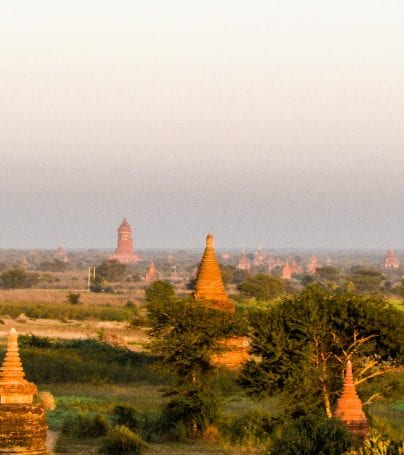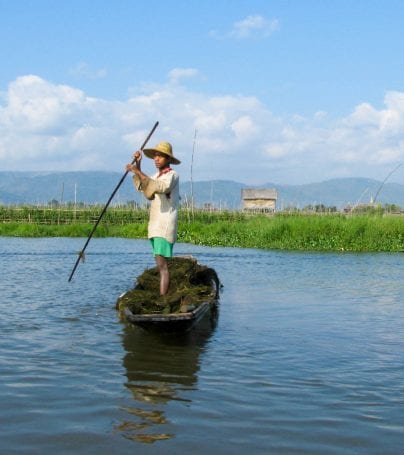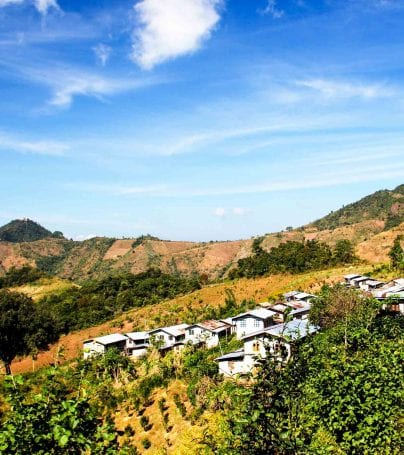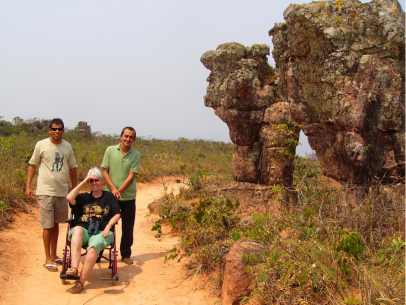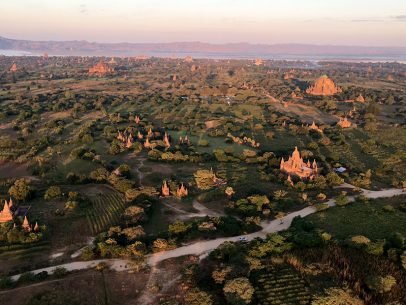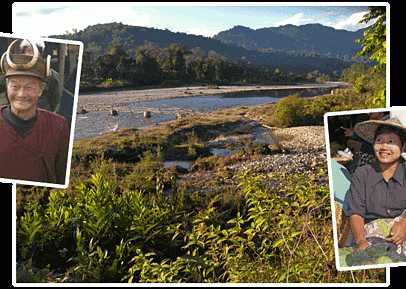Mandalay Adventure Tours
Mandalay is the second-largest city and the last royal capital of Burma (Myanmar). Located 445 miles (716 km) north of Yangon on the east bank of the Irrawaddy River, the city has a population of one million, and is the capital of Mandalay Region. Mandalay is the economic hub of Upper Burma and considered the centre of Burmese culture. A continuing influx of Chinese immigrants, mostly from Yunnan Province, in the past twenty years, has reshaped the city’s ethnic makeup and increased commerce with China. Despite Naypyidaw’s recent rise, Mandalay remains Upper Burma’s main commercial, educational and health centre. The city gets its name from the nearby Mandalay Hill. The name is likely a derivative of a Pali word although the exact word of origin remains unclear. The root word has been speculated as: “Mandala” (meaning, circular plains), “Mandare” (believed to mean “auspicious land”), or “Mandara” (a mountain from Hindu mythology). Like most former (and present) capitals of Burma, Mandalay was founded on the wishes of the ruler of the day. On 13 February 1857, King Mindon founded a new royal capital at the foot of Mandalay Hill, ostensibly to fulfill a prophecy on the founding of a metropolis of Buddhism in that exact place on the occasion of the 2,400th jubilee of Buddhism.
The new capital city site was 25.5 square miles (66 km²) in area, surrounded by four rivers. The plan called for a 144-square block grid patterned citadel, anchored by a 16 square block royal palace compound at the center by Mandalay Hill. The 1020-acre (413-hectare) citadel was surrounded by four 6,666 feet (2,032 m) long walls and a moat 210 ft (64 m) wide, 15 ft (4.6 m) deep. At intervals of 555 ft (169 m) along the wall, were turrets with gold-tipped spires for watchmen. The walls had three gates on each side, and five bridges to cross the moat. In addition, the king also commissioned the Kuthodaw Pagoda, the Pahtan-haw Shwe Thein higher ordination hall, the Thudhamma Zayats or public houses for preaching the Doctrine, and the library for the Buddhist scriptures. In June 1857, the former royal palace of Amarapura was dismantled and moved by elephants to the new location at the foot of Mandalay Hill although construction of the palace compound was officially completed only two years later, on Monday, 23 May 1859.
For the next 26 years, Mandalay was to be the last royal capital of the last independent Burmese kingdom before its final annexation by the British. Mandalay ceased to be the capital on 28 November 1885 when the conquering British sent King Thibaw and his queen Supayalat to exile, ending the Third Anglo-Burmese War.
While Mandalay would continue to be the chief city of Upper Burma during the British colonial rule, the commercial and political importance had irreversibly shifted to Yangon. The British view on the development of Mandalay (and Burma) was mainly with commercial intentions. While rail transport reached Mandalay in 1889, less than four years after the annexation, the first college in Mandalay, Mandalay College, was not established until 40 years later, in 1925. The British looted the palace, with some of the treasures still on display in the Victoria and Albert Museum, also renaming the palace compound Fort Dufferin and used it to billet troops.
Throughout the colonial years, Mandalay was the centre of Burmese culture and Buddhist learning, and as the last royal capital, was regarded by the Burmese as a primary symbol of sovereignty and identity. Between the two World Wars, the city was Upper Burma’s focal point in a series of nationwide protests against the British rule. The British rule brought in many immigrants from India to the city. In 1904–05, a plague caused about one-third of the population to flee the city. Many again fled the city during World War II when the city was under Japanese occupation from May 1942 to March 1945. The city suffered heavy damage. The palace citadel, turned into a supply depot by the Japanese, was burnt to the ground by Allied bombing; only the royal mint and the watch tower survived. (A faithful replica of the palace was rebuilt in the 1990s.)
After the country gained independence from Britain in 1948, Mandalay continued to be the main cultural, educational and economic hub of Upper Burma. Until the early 1990s, most students from Upper Burma went to Mandalay for university education. Until 1991, Mandalay University, the University of Medicine, Mandalay and the Defence Services Academy were the only three universities in Upper Burma. Only a few other cities had “Degree Colleges” affiliated with Mandalay University that offered a limited number of subjects. Today, the city attracts a fraction of students as the military government requires students to attend their local universities in order to reduce concentration of students in one place.
In November 1959, Mandalay celebrated its centennial with a festival at the foot of Mandalay Hill. Special commemorative stamps were issued.
During Gen. Ne Win’s isolationist rule (1962–1988), the city’s infrastructure deteriorated. By the early 1980s, the second largest city of Burma resembled a town with low-rise buildings and dusty streets filled mostly with bicycles. In the 1980s, the city was hit by two major fires. In May 1981, a fire razed more than 6,000 houses and public buildings, leaving more than 36,000 homeless. On 24 March 1984, another fire destroyed 2,700 buildings and made 23,000 people homeless. Fires continue to plague the city. A major fire destroyed Mandalay’s second largest market, Yadanabon Market, in February 2008, and another major fire in February 2009 destroyed 320 homes and left over 1600 people homeless.
The 1980s fires augured a significant change in the city’s physical character and ethnic makeup. Huge swaths of land left vacant by the fires were later purchased, mostly by the ethnic Chinese, many of whom were recent immigrants from Yunnan. The Chinese influx accelerated after the current military government came to power in 1988. With the Burmese government turning a blind eye, many Chinese immigrants from Yunnan (and also from Sichuan) poured into Upper Burma in the 1990s and many openly ended up in Mandalay. In the 1990s alone, about 250,000 to 300,000 Yunnanese are estimated to have migrated to Mandalay. Today, the Chinese are believed to make up about 30%–40% of the city’s population, and are a major factor in the city’s doubling of population from about 500,000 in 1980 to one million in 2008. Chinese festivals are now firmly embedded in the city’s cultural calendar. It is a common Burmese complaint that Mandalay is becoming little more than a satellite of China and that the romance of old Mandalay is long gone.
The Chinese are largely responsible for the economic revitalization of the downtown, now rebuilt with apartment blocks, hotels and shopping malls, and returning the city to its role as the trading hub connecting Lower Burma, Upper Burma, China and India. The Chinese dominance in the city centre has pushed out the rest to the suburbs. The urban sprawl now encompasses Amarapura, the very city King Mindon left some 150 years ago. Mandalay celebrated its 150th birthday on 15 May 2009, precisely at 4:31:36 am.
Despite the rise of Naypyidaw, the country’s capital since 2006, Mandalay remains Upper Burma’s main commercial, educational and health centre.
Customize Your Dream Adventure
We are here to help craft tailor-made adventures for individuals, couples, families, and groups of explorers.

